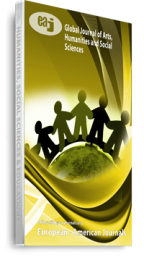The problem of street children, as depicted by Amma Darko, is a growing phenomenon in African cities. As evidence, many nongovernmental organizations are concerned with abandoned children’s living conditions, convinced that today’s young girls and boys are the adults of tomorrow. Following in these charitable institutions’ footsteps, Amma Darko in Faceless, looks into the phenomenon in all its aspects. In its form as well as in its content, the novel addresses the issue with a special focus on the word ‘street’ which receives the abandoned children. Basing on new criticism theory, the analyses reveal that, aesthetically, the street is given a special place in the novel. It appears approximately 85 times, that is a little less than half the entire number of pages of the novel (199 pages). It is used directly as parts of speech, sometimes personified, with different grammatical functions. Indirectly, it is presented in alternation with a conventional family the Kabrias, MUTE, an NGO caring for abandoned children and a radio station, Harvest FM. Seen from the point of view of symbolism and put in relation with the stakeholders of the phenomenon of street children, the street turns out to symbolize a space of escape, of survival, of a jungle, of destruction, of violence and crime and of a barracks.
Keywords: Aesthetics, Street, Street Children, Street Girls, Symbolism

